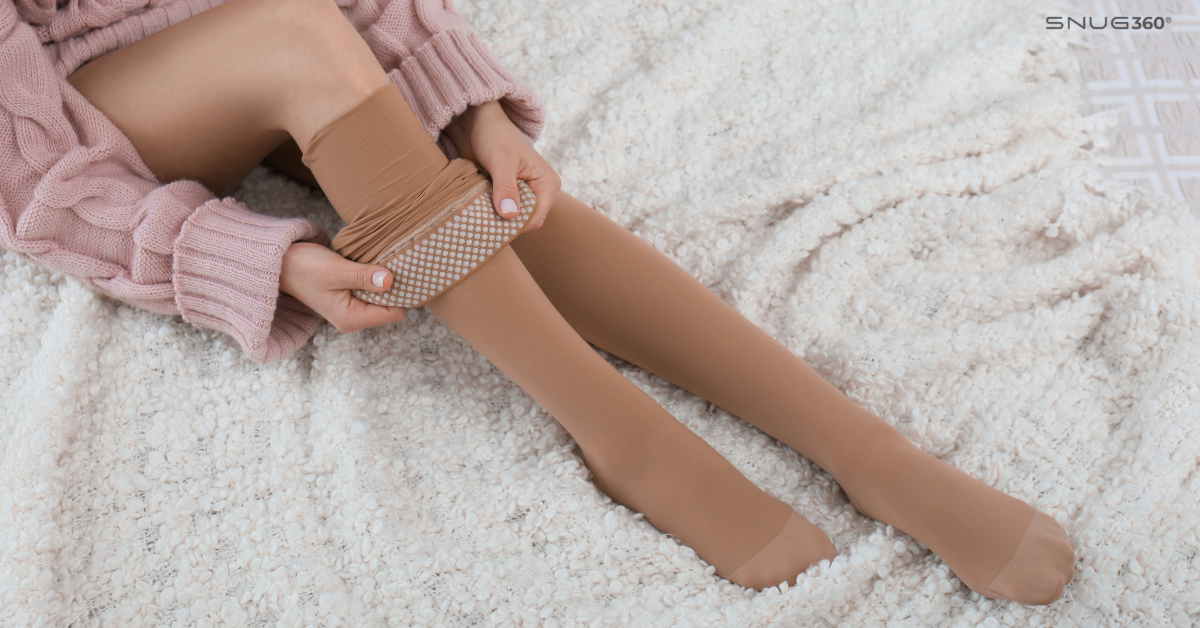Surgery of any sort places a significant strain on the body, from primary operations to minor procedures. Recovery is critical, and ensuring optimal healing conditions is essential in avoiding complications. Compression socks have proven themselves to be one of the most useful post-surgery aids; this comprehensive guide delves into their benefits for speeding recovery, avoiding complications, and improving overall well-being after surgery.
The Science Behind Compression Socks
Compression socks are specially designed hosiery that apply graduated pressure to the legs, with the highest pressure at the ankle gradually decreasing up the leg. This gradient promotes better blood flow, reduces swelling, and minimizes discomfort - understanding its science will allow one to appreciate its benefits fully.
Improved Blood Circulation: After surgery, patients often experience reduced mobility that impairs their blood circulation. Compression socks post surgery help ensure blood is moved back towards the heart by applying pressure to assist veins in moving it back towards them - something essential in avoiding venous stasis, where blood pools in lower leg veins.
Prevention of Deep Vein Thrombosis (DVT): DVT is a severe condition in which blood clots form in deep veins of the legs, particularly after surgery, due to immobility and changes in blood chemistry. Compression socks help decrease this risk by encouraging continuous blood flow, thereby preventing any potential clot formation.
Reducing Swelling (Edema): Swelling in the legs and feet after surgery can often result in fluid accumulation, known as oedema. Compression socks help minimize this condition by encouraging lymphatic drainage, thus ensuring excess fluid is effectively removed from tissues.
Alleviation of Pain and Discomfort: Post-surgery pain can be compounded by swelling and poor circulation, with compression socks offering gentle pressure relief to reduce inflammation while supporting veins and muscles, making movement more comfortable.
Types and Uses of Compression Socks
There is an assortment of compression socks designed to meet specific medical requirements or personal preferences.
Graduated Compression Socks: Graduated compression socks are one of the most frequently worn post-surgery, providing maximum pressure at the ankle while gradually tapering off toward the top. This compression sock can promote circulation while simultaneously decreasing swelling.
Anti-Embolism Stockings: These compression socks post surgery were created explicitly for bedridden patients to prevent blood clots by providing consistent pressure throughout the leg. They may be used immediately post surgery until patients regain mobility.
Custom-Fitted Compression Socks: Custom-fitted compression socks offer patients with specific needs the opportunity for optimal pressure distribution and comfort by accommodating different leg shapes and sizes.
How and When to Wear Compression Socks Post-Surgery?
How and When to Wear Compression Socks Post-Surgery?
The length and timing of wearing compression socks post-surgery depends upon both the type of surgery as well as an individual's overall health, but here are some general guidelines:
At the Time of Surgery: Post-surgery socks should be worn immediately following surgery in the hospital to aid recovery by avoiding early complications like DVT and helping the healing process get underway faster.
Hospital Stay: Anti-embolism stockings should be worn continuously throughout a hospital stay, especially if bedridden patients require continuous support. Anti-embolism stockings are commonly utilized during this stage.
After Surgery: Once patients return home from their surgeries, they are often advised to continue wearing compression socks for several weeks up to several months based on individual circumstances and recovery progress.
Daily Routine: Compression socks should typically be worn during the day and removed prior to bedtime. However, specific instructions from healthcare providers should always be followed.
Compression Socks Can Aid Recovery Post-Surgery
The advantages of compression socks extend well beyond essential recovery support; they can offer multiple advantages that help speed healing.
Enhance Recovery Speed: Compression socks accelerate the body's natural healing processes and speed up recovery times for patients, helping them return to their regular activities sooner.
Reduced Risk of Complications: Utilizing compression socks after surgery helps lower the risk of post-surgery complications like DVT, pulmonary embolism and severe oedema, providing a quicker recovery period and decreasing the chances of readmission to the hospital. This ensures an optimal experience during recuperation and decreases hospital readmission rates.
Increased Comfort and Mobility: Swelling and pain can restrict patients from moving freely, and compression socks can provide much-needed relief by increasing comfort and mobility. They are essential in encouraging light activity for optimal recovery purposes.
Help for Chronic Conditions: Patients living with chronic conditions like venous insufficiency, lymphedema or varicose veins often benefit significantly from compression therapy after surgery. Compression socks offer ongoing support that enables them to manage these conditions more easily while recovering from surgery.
Psychological Advantages: Reducing pain and discomfort as well as the risk of complications contributes to greater mental well-being for patients, making their recovery journey feel safer and more reassuring, which has a direct bearing on overall health outcomes.
Finding the Right Post Surgical Compression Socks
Selecting suitable compression socks requires taking into account several key aspects. For example:
Medical Advice: When seeking advice regarding appropriate type and compression level compression garments for surgery or individual health conditions, it is always wise to consult a healthcare provider for personalized recommendations based on both.
Proper Fit: Ensuring socks fit correctly is essential for their effectiveness. Measure legs according to manufacturer recommendations in order to find a size suitable for you - incorrect fitting socks may cause discomfort and fail to deliver expected benefits.
Material and Comfort: Compression socks come in various materials such as cotton, nylon and spandex blends; select one that is comfortable enough to wear over extended periods. Cotton may be best; nylon and spandex blends might not.
Ease of Use: Some compression socks may be easier to put on and take off than others, so consider designs featuring zippers or open-toe designs if this feature is an essential consideration for you.
Aesthetic Preferences: While function should always come first, modern compression socks often come in various colors and patterns so patients can select the styles they're most comfortable wearing daily.
How to Care for Post Surgical Compression Socks?
Proper care extends the lifespan and effectiveness of compression socks. Here are a few helpful hints:
Regular Washing: To maintain their elasticity and hygiene, compression socks must be regularly washed using mild detergent in lukewarm water and avoid bleach or fabric softeners.
Drying: Air dry your socks indoors away from direct heat sources like radiators or sunlight to protect the elastic fibers from potential damage.
Inspection: Periodically check for signs of wear and tear on socks as their effectiveness diminishes over time. Replace socks if they become inflexible or show significant signs of wear - otherwise, their performance will decrease quickly.
Storage: Compression socks should be stored in a cool and dry location. Folding them carefully helps preserve their shape and elasticity.
Bottom Line
Compression socks are an easy, noninvasive tool that plays an integral part in post-surgical recovery. Their ability to improve circulation, reduce swelling, and protect from severe complications like DVT make them invaluable tools. By understanding the science behind their use and the various types available to them effectively, patients can improve their recovery experience and achieve improved health outcomes more quickly. And SNUG360 takes pride in offering the best pair of post-surgery socks. Our compression socks post surgery can help patients recover more quickly, enjoy greater comfort, and lessen complications - ultimately aiding a quicker return to everyday life. Shop now.









